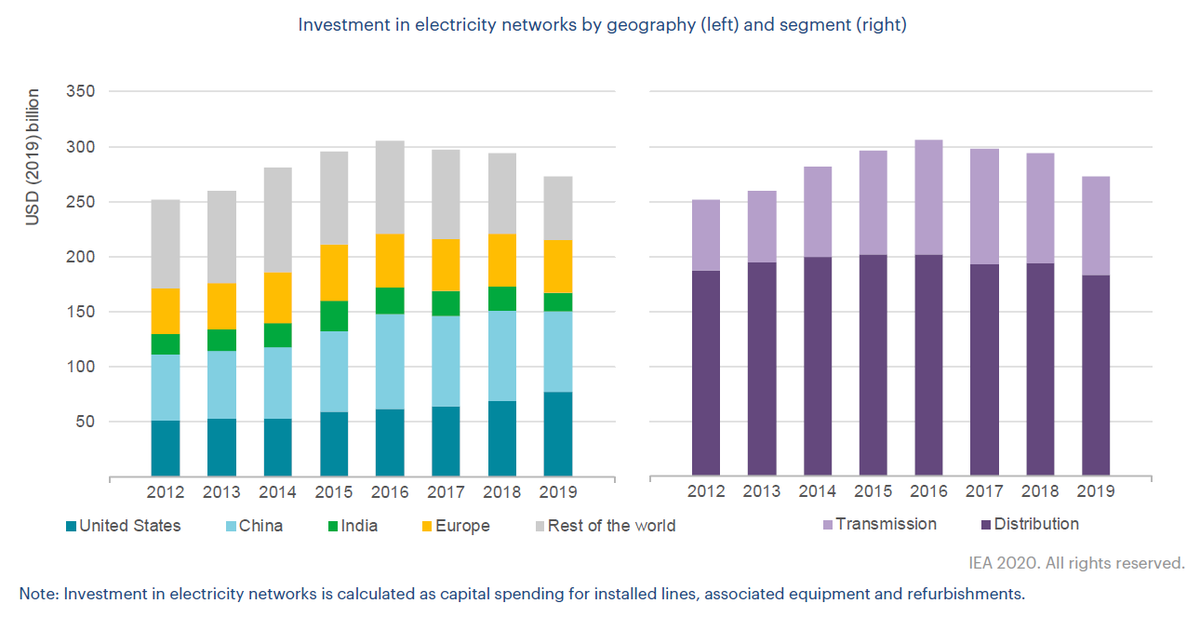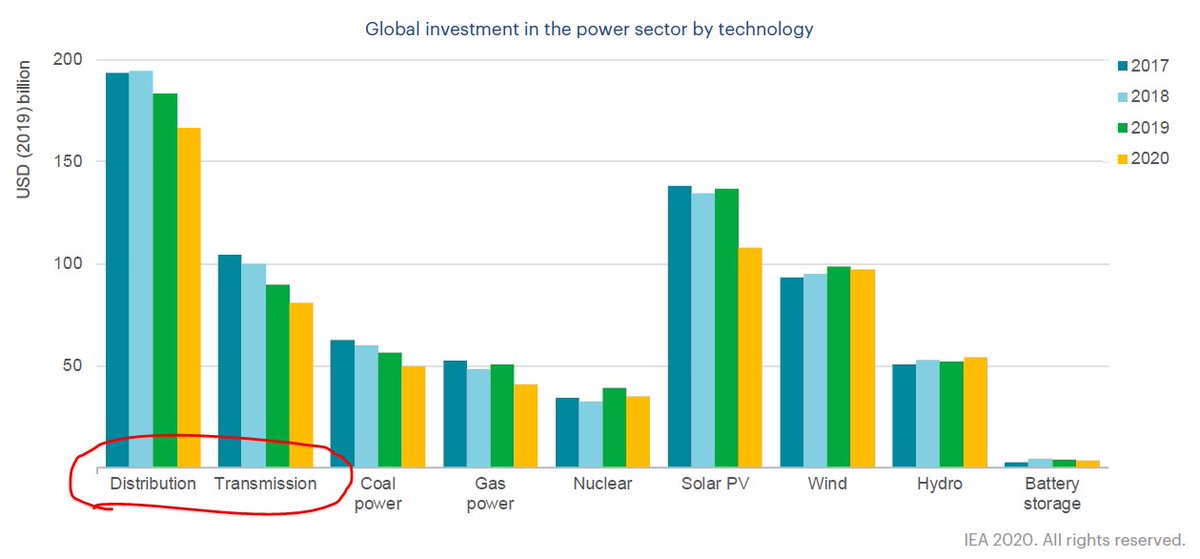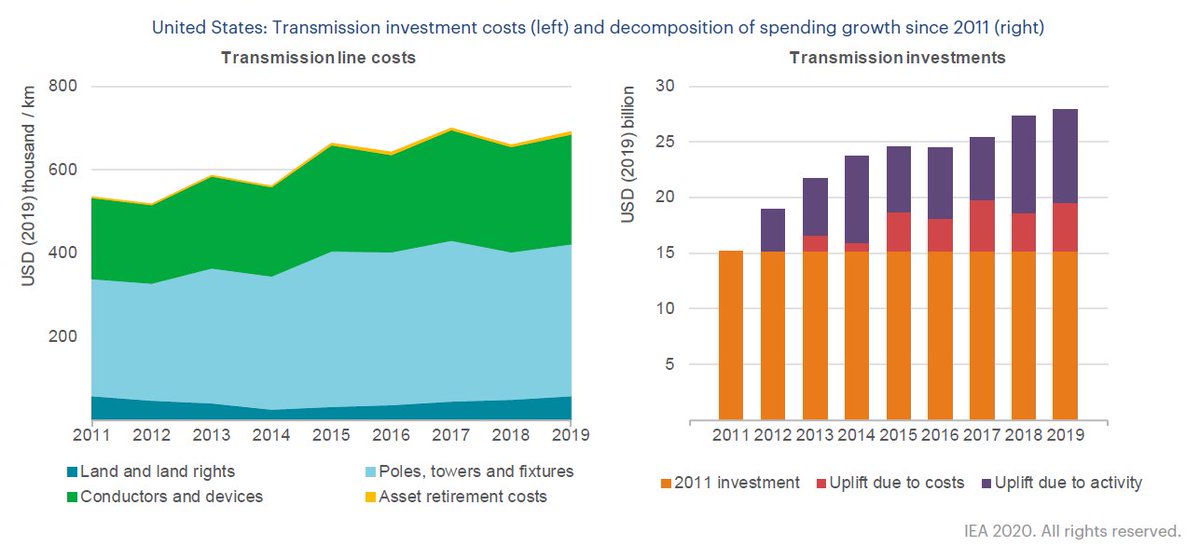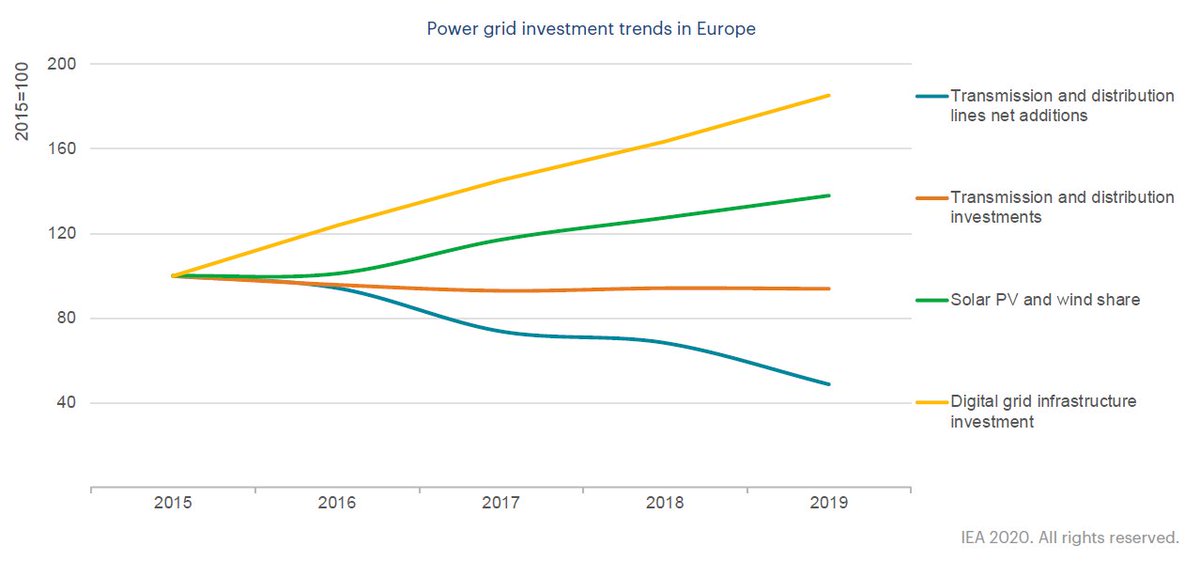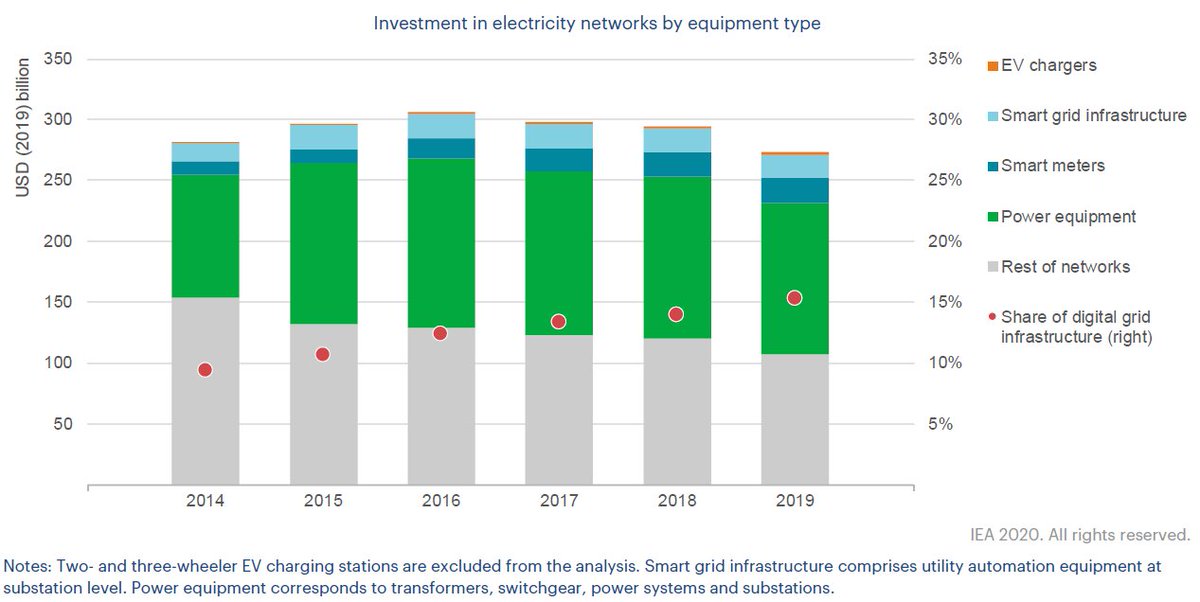Electricity grids are like the delivery to the pizza during lockdown. You want the pizza, but the delivery is key! While you can see/talk to the delivery guy/girl, you don’t interact with the pizza maker. [THREAD]
So just like a pizza delivery, the food gets all the attention but you wouldn’t be able to enjoy it without the delivery... yet, we don’t talk as much about electricity grids... despite their importance and high investment needs.
Grids are a key part of the electric system because (the obvious reason) they transport electricity... but they also have a critical role to better integrate variable and dist. renewables, to enhance reliability, provide + flexibility (to respond better to changes in demand), etc
As we show in the @IEA World Energy Investment report, global investment in electricity grids fell again in 2019 by 7%, given decreased spending in China and despite strong growth in the US. They are also set to fall again in 2020, by 9%. See http://iea.li/2M8HVyr ">https://iea.li/2M8HVyr&q...
The hit in 2020 will be larger in "developing countries as most of the investment in networks is financed by state-owned utilities that were in weak financial position before the crisis, and will likely worsen".
If interested, check out some of the country analysis we did, illustrating the role of policies as a driver of spending (see US case), how more $ is being spent on upgrading and refurbishments in Europe as more reneables come online and more stuff becomes electric (e.g. EVs).
So a bit + on grids... remember, they need attention :) There are # types of grids: low voltage (V) and high V, medium V and ultra-high V (wow!). Some go under ground and some overhead. And SOOO many names: lines, grids, networks, cables.
And it’s not just about cables... there are transformers, substations, switch-wears, poles, meters and more.
And some big categories:
- transmission (“high speed” transportation of electricity)
- distribution (“med/low speed” transportation of electricity))
- mini-grids (“mini” systems of grid+generation separated from the “main”/central grid)
- smart grids.
- transmission (“high speed” transportation of electricity)
- distribution (“med/low speed” transportation of electricity))
- mini-grids (“mini” systems of grid+generation separated from the “main”/central grid)
- smart grids.
Note: now mini-grids are sort of a new sexy topic for electrification, but most electricity grids across the world started like mini-grids that, as electricity demand grew, they interconnected and benefited from sharing resources and optimization.
The pizza delivery analogy doesn& #39;t work here, but it& #39;s worth mentioning: A key thing on electric networks v. generation is that the former is a natural monopoly while the latter is not.
A natural monopoly is when it’s cheaper for one company to produce the good and service the demand than for two or more companies to do so, given the high fixed, upfront costs. This means that -whether public or private- regulating the monopoly is key to protect consumers.
[Or, in more technical terms, the long-run/total average costs fall continuously and the marginal cost is always below the total average cost (this is not the case in competitive markets).]
So grids have unique characteristics and they& #39;re maybe less "sexy" than power plants but, as we say in this article https://tinyurl.com/ybrf6sct ,">https://tinyurl.com/ybrf6sct&... "tomorrow’s power systems have to remain reliable as they are transformed by the rise of clean energy technologies...
...and growing trends toward electrification of demand, driven by ambitious targets and commitments around the world."... and it takes long to build them... so the continuous decline in investment is a BIG problem. That& #39;s why this focus was so important https://twitter.com/IEABirol/status/1266395526855118850">https://twitter.com/IEABirol/...
[END]
PS. How good/bad was the analogy? Better suggestions welcome!
[REAL END]
PS. How good/bad was the analogy? Better suggestions welcome!
[REAL END]

 Read on Twitter
Read on Twitter